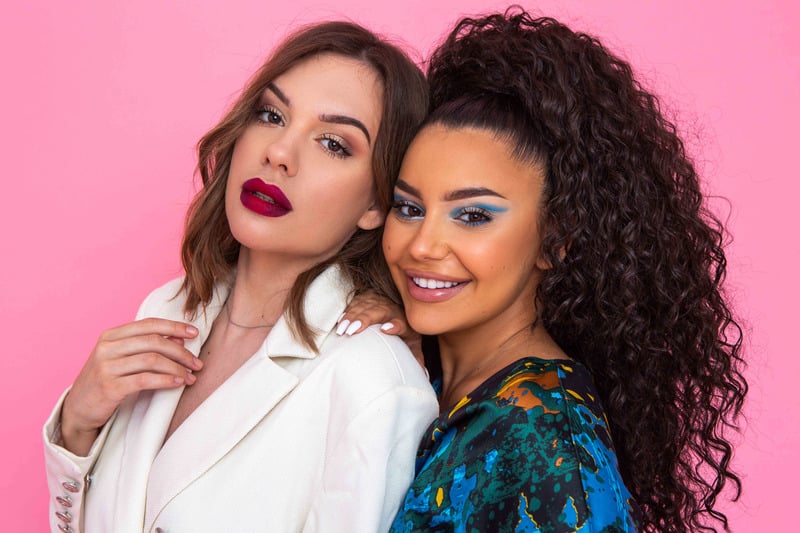Color correcting makeup can seem a bit daunting at first, but it’s an incredibly effective tool for achieving a flawless complexion. With the right products and techniques, you can neutralize unwanted tones and imperfections, creating a smooth and even base for your makeup. In this guide, we will walk you through everything you need to know about using color correcting makeup, including tips and tricks to help you master this essential makeup skill.
Understanding Color Correction
Color correcting makeup uses the principles of color theory to neutralize discolorations on your skin. By applying colors opposite to the unwanted tones on the color wheel, you can effectively cancel them out. Here’s a quick overview of the most common color correctors and what they do:
- Green: Neutralizes redness from acne, rosacea, or irritation.
- Purple/Lavender: Counteracts yellow or sallow tones.
- Yellow: Conceals purple or blue bruises, veins, and under-eye circles.
- Pink/Peach: Brightens dark under-eye circles and dullness on light to medium skin tones.
- Orange: Corrects dark spots and under-eye circles on medium to deep skin tones.
Choosing the Right Color Corrector
Choosing the right color corrector depends on your specific skin concerns. According to Bobbi Brown, makeup artist and founder of Bobbi Brown Cosmetics, “The key to successful color correction is to neutralize the unwanted tones on your skin, not cover them up.” (Source: Bobbi Brown’s website) Here’s how to select the correct color for your needs:
- Redness: If you have redness from acne or rosacea, a green corrector will be your best friend. It neutralizes the red tones, making them less visible.
- Dark Circles: Dark circles can vary in color from blue to purple to brown. For blue or purple circles, use a peach or pink corrector. For brown or deep under-eye circles, an orange corrector works best.
- Dullness: If your skin looks dull or sallow, a purple or lavender corrector can brighten your complexion.
- Hyperpigmentation: For dark spots or hyperpigmentation, use a peach or orange corrector depending on the depth of your skin tone.
How to Apply Color Correcting Makeup
Step 1: Prep Your Skin
Before applying any color corrector, make sure your skin is clean and moisturized. This helps the makeup to blend smoothly and stay in place. Use a lightweight moisturizer that absorbs quickly and doesn’t leave a greasy residue.
Step 2: Prime Your Face
Applying a primer can help create a smooth base for your color corrector and foundation. According to makeup artist Wayne Goss, “Mastering color correction is like having a secret weapon in your makeup arsenal.” (Source: Wayne Goss YouTube channel) Choose a primer that suits your skin type – mattifying for oily skin, hydrating for dry skin, or pore-filling for combination skin.
Step 3: Apply the Color Corrector
Use a small amount of color corrector and apply it only to the areas that need correction. You can use your fingers, a makeup brush, or a beauty sponge for application. Here’s how to use each color corrector effectively:
- Green Corrector: Dab a small amount onto red areas, such as blemishes or areas with rosacea. Blend gently with your fingers or a brush until the green hue is barely visible.
- Purple/Lavender Corrector: Apply to areas with yellow undertones or dullness. Blend it out to ensure it seamlessly integrates with your natural skin tone.
- Yellow Corrector: Use on purple or blue areas like bruises or veins. Lightly pat and blend until the discoloration is neutralized.
- Pink/Peach Corrector: Apply under the eyes to brighten dark circles. Blend carefully to avoid harsh lines.
- Orange Corrector: For deeper skin tones, use on dark spots or under-eye circles. Blend well to ensure an even application.
Step 4: Apply Foundation
Once your color corrector is blended, apply your foundation over it. Use a foundation that matches your skin tone and apply it with a beauty sponge, brush, or your fingers. The foundation will help to further blend the color corrector and create a seamless look.
Step 5: Conceal and Set
If needed, apply a concealer over any areas that still show discoloration. Choose a concealer that matches your skin tone and blend it well. Finish with a translucent powder to set your makeup and prevent it from moving throughout the day.
Tips for a Flawless Finish
Blend, Blend, Blend
Blending is crucial when using color correctors. You want the corrector to neutralize the unwanted tones without leaving a noticeable tint on your skin. Use light, patting motions and build up coverage gradually.
Use the Right Tools
The tools you use can make a big difference in the application of your color corrector. Brushes provide precision, sponges offer a seamless blend, and fingers give a natural finish. Experiment with different tools to find what works best for you.
Don’t Overdo It
Less is more when it comes to color correction. Start with a small amount of product and add more if needed. Over-applying can lead to a cakey appearance and make the corrector more difficult to blend.
Choose the Right Formulas
Color correctors come in various formulas, including creams, liquids, and sticks. Cream formulas are great for dry skin, while liquids work well for oily or combination skin. Sticks offer precision and are ideal for spot correction.
Common Mistakes to Avoid
Using Too Much Product
Using too much color corrector can make your makeup look heavy and unnatural. Start with a small amount and build up coverage as needed.
Not Blending Properly
Improper blending can leave visible patches of color on your skin. Take your time to blend the product seamlessly into your skin.
Skipping Primer
Skipping primer can make it difficult for the color corrector to adhere to your skin and stay in place. Always use a primer to create a smooth base.
Ignoring Skin Tone
Choosing the wrong color corrector for your skin tone can make the problem worse. Make sure to select the corrector that matches your specific skin concern and tone.
Personal Experience
In my experience, using a color corrector has made a significant difference in the overall appearance of my makeup. I struggled with redness around my nose and chin, and using a green corrector has helped to neutralize these areas, making my foundation look more even and natural. Additionally, using a peach corrector under my eyes has brightened my complexion and made me look more awake.
Conclusion
Color correcting makeup can be a game-changer in your beauty routine. By understanding your skin’s needs and using the right products and techniques, you can achieve a flawless, even complexion. Remember to blend well, use the right tools, and start with a small amount of product. With practice, you’ll master the art of color correction and enjoy the confidence that comes with a perfect makeup look.
Enjoy exploring the world of color correcting makeup and achieving a flawless complexion!



